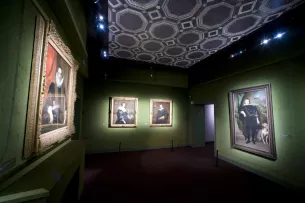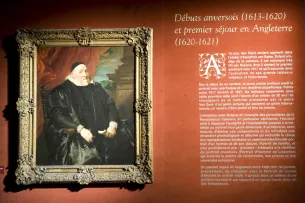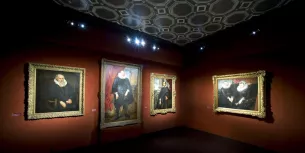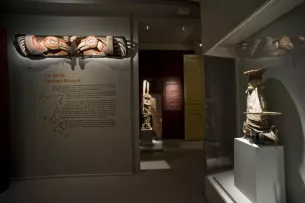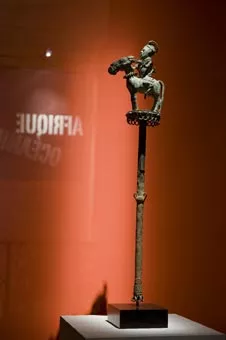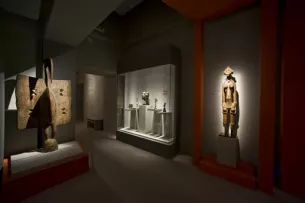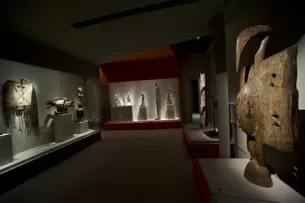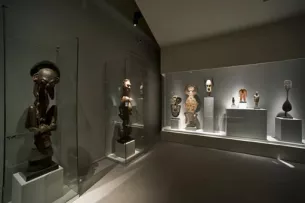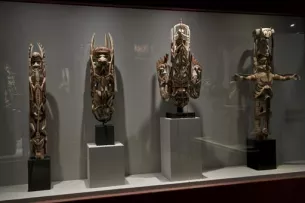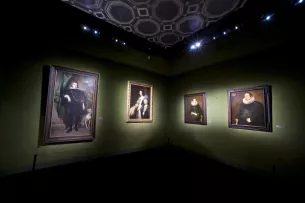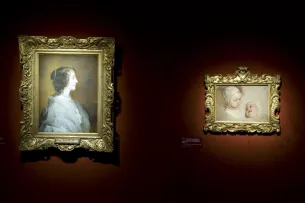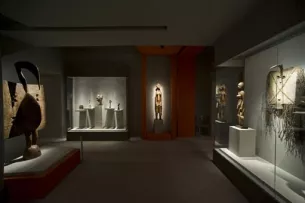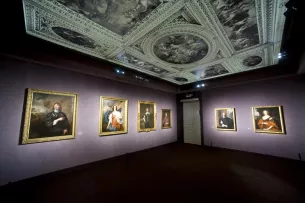ONLINE BOOKING STRONGLY RECOMMENDED. Due to the high number of visitors to the exhibition, access cannot be guaranteed for visitors without tickets.
Exhibition
Africa Oceania
Masterpieces of the Barbier-Mueller collection
The rarest masterpieces from the Barbier-Mueller Collection, the most stunning private collection of African and Oceanic art in the world, are to be brought together for the very first time at an exhibition to be held at the Musée Jacquemart-André in celebration of the collection’s one hundredth anniversary.
Masterpieces of african and oceanic art
This exciting exhibition represents a voyage of discovery through the art of non-Western cultures revealed in one hundred unique, exceptionally beautiful and striking works. Embracing a wealth of ethnic origins, eras, customs, styles, forms and inspirations, the works that make up this exhibition are a remarkable range of sculpted faces and figures (statues, masks, totems, headpieces, crest masks, sceptres, etc.) bearing a variety of enigmatic expressions and some of them very imposing in size. The majority of pieces on display, such as the Knight’s Sceptre, a Nigerian work dating to the 12th-century, have no equivalent anywhere in the world.
These masterpieces bear witness to the creative virtuosity and the technical mastery of the people of Africa and Oceania from the 9th century BC onwards. They also represent a celebration of the journey of enlightenment made by three generations of collectors.
Brought together for the first time
The masterworks and the previously unexhibited pieces from the Barbier-Mueller Collection have never before been brought together to form part of any exhibition, let alone one that extols their beauty as much as the history behind them. Jean Paul Barbier-Mueller had always refused to release these treasured artworks, even on a temporary basis. However, to mark the one hundredth anniversary of the family’s collection and following the success of the exhibition "Man and his Masks)"at the Musée Jacquemart-André, he has agreed to put them on display for the first time for a limited period.
The exhibition represents an opportunity to discover works that shed light on each other through their very beauty and meaning, and which take visitors, both the uninitiated and well-informed alike, on an unparalleled journey to the heart of Art from Africa and Oceania, broken down into major geographical sections.
A collection spanning one hundred years and three generations of artistic passion
Amassed by three generations of art enthusiasts, this unique family collection was started in 1907 when the 20-year-old Josef Mueller bought the painting La Jeune Fille à la capucine from the artist Cuno Amiet. Mueller’s collection very quickly grew in size and diversity. At the beginning of the 1920s his interest in African and Oceanic art led to him buying works that are today considered masterpieces. His daughter Monique and his son-in-law Jean Paul Barbier-Mueller inherited his passion for non-Western art and opened the Barbier-Mueller Museum of Geneva in 1977 and then the Barbier-Mueller Museum of Barcelona in 1997. And today their children have become the third generation of collectors for whom Art from Africa, Oceania and Asia forms a key part of the family’s collections.
A private collection offering a different perspective
Over the course of the first half of the 20th century art from Africa and Oceania slowly gained acceptance into the largely exclusive art world. Private collectors, ethnologists and art lovers, in short all those with an interest in protecting artworks from the ravages of time and ethnic wars, devoted their efforts to promoting the in-depth study of utilitarian or ceremonial objects that were to become works of art in their own right.
Since the opening of his museum in Geneva, Jean Paul Barbier-Mueller has combined the intense pleasure of the aesthete struck by the beauty of the object with the rigour of the learned collector, uninfluenced by the origin of his discoveries. His purpose in analysing the history of each of the pieces in the family collection is to convey their full meaning.

